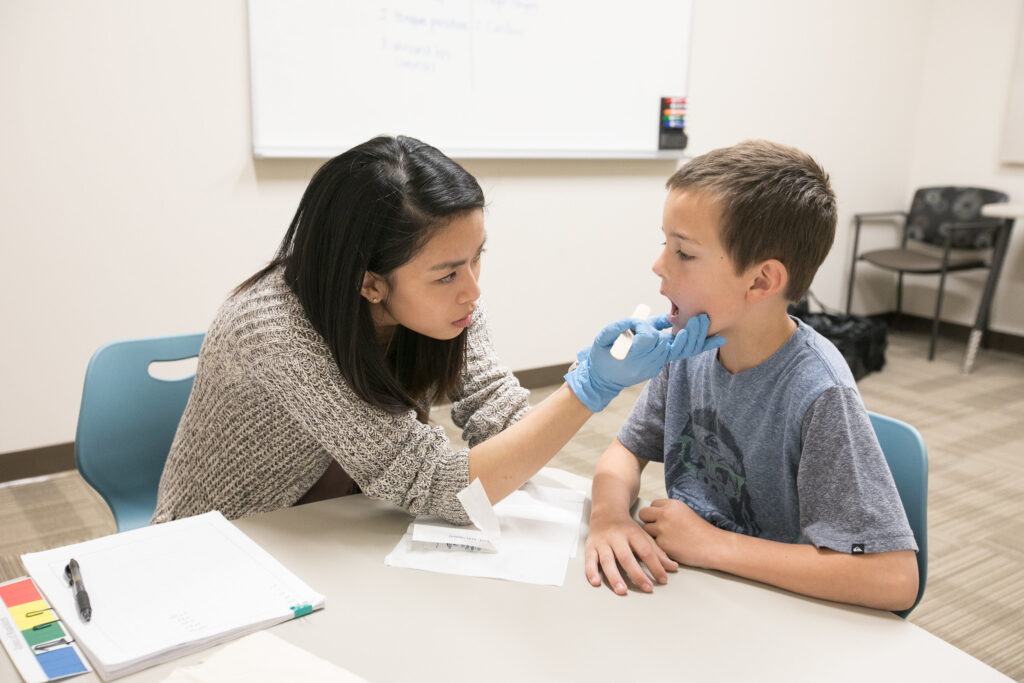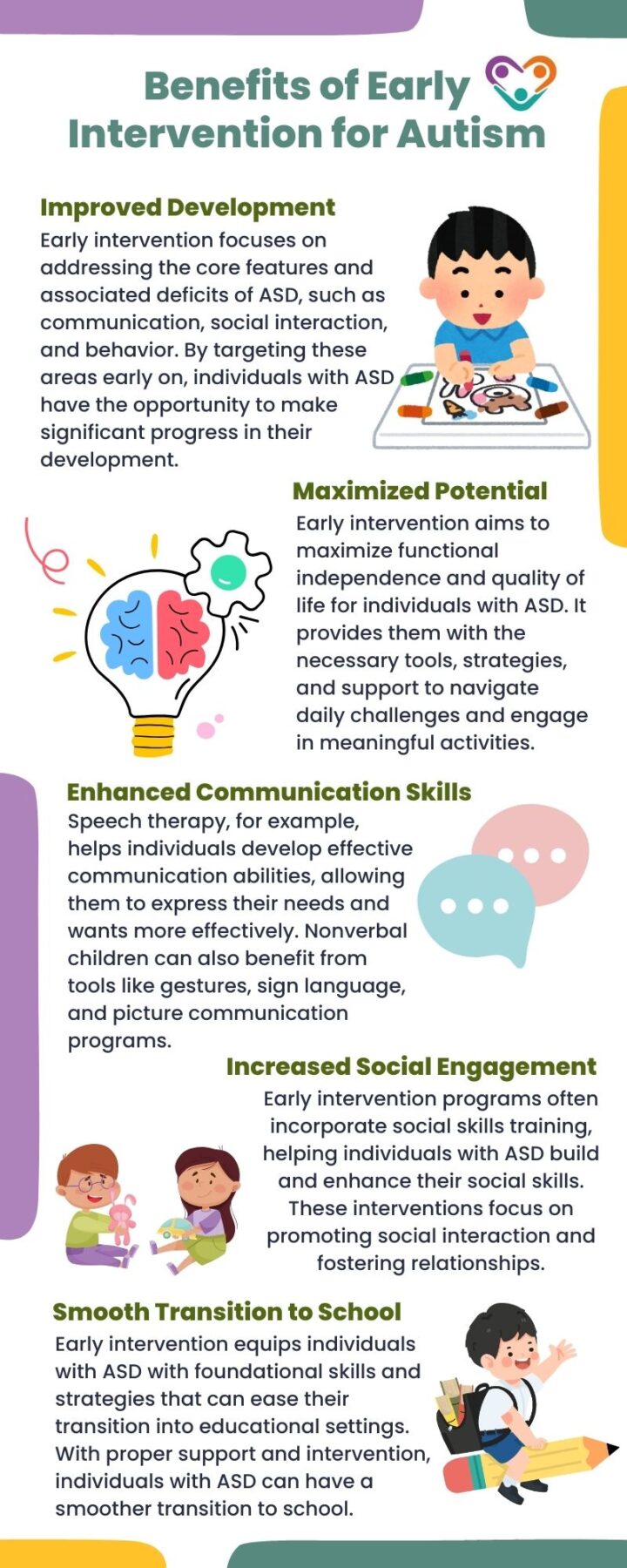
Table of Contents
Discover evidence-based interventions for autism that transform lives. From ABA to ESDM, unlock the keys to progress and independence.
With the number of people diagnosed with autism increasing, it’s crucial to use methods that we know are effective. These evidence-based interventions offer hope and practical solutions for individuals and families navigating the challenges of ASD.
These interventions involve procedures that utilize a combination of instruction and intervention approaches, tailored to meet the individual’s learning abilities and skill needs.
Importance of Evidence-Based Practices
These evidence-based practices are based on extensive research and have been shown to be effective in supporting individuals with ASD across various domains, including communication, behavior, social skills, and daily living skills.
By utilizing evidence-based practices, parents, caregivers, and professionals can have confidence that the interventions they are providing are grounded in scientific evidence and have a higher likelihood of producing positive outcomes. These practices are continuously evolving as new research emerges, allowing for ongoing advancements in the field of autism interventions.
The interventions should also be personalized. Tailored interventions for individuals with ASD recognize the importance of individualized approaches to address the unique needs and challenges faced by each person on the autism spectrum. These interventions take into account the specific strengths, weaknesses, and goals of the individual, ensuring that the interventions are personalized and effective.
Effective Treatments for ASD
There are several effective treatments and interventions available that can make a significant difference in the lives of individuals with autism spectrum disorder (ASD). Two of the most widely recognized and researched interventions are Applied Behavioral Analysis (ABA) and Occupational Therapy.
Applied Behavioral Analysis (ABA)
Applied Behavioral Analysis (ABA) is an evidence-based intervention that utilizes principles of behavioral psychology to systematically change behavior. ABA focuses on encouraging positive behaviors, discouraging negative ones, and teaching new skills that can be applied to various situations. It is a structured and data-driven approach that has shown promising results in improving social, communication, and adaptive skills in individuals with ASD.
ABA interventions are tailored to the specific needs of each individual. Trained therapists work closely with individuals with ASD, using techniques such as prompting, reinforcement, and shaping to help them acquire and generalize new skills. ABA interventions may be implemented in various settings, including the home, school, or clinical settings.
Occupational Therapy
Occupational therapy is another effective treatment for individuals with autism spectrum disorder. This intervention focuses on improving an individual’s ability to participate in daily activities and promoting independence. Occupational therapists work collaboratively with individuals with ASD and their families to identify goals, develop intervention plans, and provide ongoing support and guidance.
Occupational therapy interventions for individuals with ASD encompass a wide range of areas, including self-care, fine motor skills, sensory integration, and social interaction. Through a variety of techniques and activities, occupational therapists help individuals develop the necessary skills for daily living. This may include sensory integration therapy, play-based activities, and adaptive strategies to enhance their functional abilities.
Both ABA and occupational therapy are evidence-based interventions that have been shown to have positive effects on individuals with ASD. The choice of intervention depends on the unique needs and goals of the individual. It is often beneficial to incorporate a multidisciplinary approach, combining different interventions to address various areas of development and maximize the individual’s progress.
Specialized Programs
There are also specialized programs that have shown promising results in improving the lives of individuals with Autism Spectrum Disorder (ASD). In this section, we will explore two such programs: the Early Start Denver Model (ESDM) and speech therapy.
Early Start Denver Model (ESDM)
The Early Start Denver Model (ESDM) is a comprehensive Applied Behavioral Analysis (ABA) program designed for infants, toddlers, and preschoolers with ASD. This program focuses on naturalistic ABA, interpersonal exchange, shared enjoyment, promotion of language and communication, and parent involvement. The goal of ESDM is to provide early intervention services that address the core deficits associated with ASD and maximize developmental outcomes.
Research has shown that children who received 20 hours of ESDM per week demonstrated significant improvement in cognitive testing, adaptive skills, and autism symptoms when compared to those who received typical community treatment. The ESDM program emphasizes the importance of early intervention and aims to provide children with the necessary skills to thrive in various settings, including home, school, and community.
Speech Therapy
Speech therapy is a vital component of the treatment plan for individuals with ASD, particularly for improving communication skills. Speech-language pathologists, or speech therapists, play a crucial role in helping individuals with ASD enhance their communication abilities.
Speech therapy focuses on improving various aspects of communication, including expressive and receptive language skills, articulation, social communication, and pragmatic language skills. Through individualized therapy sessions, speech-language pathologists work closely with individuals with ASD to develop strategies and techniques that can help them effectively express their needs and wants.
For nonverbal individuals, speech therapists utilize alternative communication methods, such as gestures, sign language, and picture communication programs, to improve their ability to communicate and interact with others. These alternative communication tools can provide individuals with ASD a means to express themselves and engage in meaningful interactions.
By incorporating speech therapy into the overall treatment plan, individuals with ASD can gain valuable communication skills, which can improve their quality of life and enhance their ability to navigate social situations.
Evidence Based Interventions for Functional Independence
Maximizing functional independence is a key goal of intervention. This involves providing individuals with the necessary tools and support to enhance their daily functioning and quality of life. Two important components in this process are physical therapy and pharmacological therapy.
Physical Therapy
Physical therapy plays a crucial role in the treatment of individuals with ASD. It focuses on improving gross motor skills, coordination, balance, and strength. By targeting these areas, physical therapy aims to enhance functional independence and promote active participation in daily activities.
Through tailored exercises and interventions, physical therapists work with individuals with ASD to address specific motor challenges they may face. This can include difficulties with balance, posture, or motor planning. By targeting these areas, physical therapy helps individuals develop the skills needed to navigate their environment and engage in various physical activities.
The benefits of physical therapy for individuals with ASD extend beyond the physical aspects. It can also contribute to improvements in social interaction, communication, and behavior, as well as overall well-being. By improving motor skills and coordination, physical therapy can enhance an individual’s ability to participate in social and recreational activities, fostering greater inclusion and engagement.
Pharmacological Therapy
Pharmacological therapy, or the use of medications, may be considered for individuals with ASD to manage specific symptoms or co-occurring conditions. While medication is not a primary treatment for core features of ASD, it can be helpful in addressing associated challenges and improving overall functioning and quality of life.
The use of pharmacological therapy in ASD treatment is highly individualized and should be guided by healthcare professionals and specialists. Medications may target symptoms such as hyperactivity, aggression, anxiety, depression, or sleep disturbances. By addressing these specific challenges, pharmacological therapy can support individuals with ASD in their daily functioning and overall well-being.
It is important to note that pharmacological therapy is just one component of a comprehensive treatment plan for individuals with ASD. It should be used in conjunction with other evidence-based interventions, such as applied behavioral analysis, occupational therapy, and speech therapy. A multidisciplinary approach that combines various interventions, including physical therapy and pharmacological therapy, can help individuals with ASD maximize their functional independence and reach their highest potential.
Early Intervention for ASD
When it comes to autism spectrum disorder (ASD), early intervention plays a crucial role in the overall development and well-being of individuals. Early diagnosis, coupled with prompt and evidence-based intervention, can have a significant impact on the prognosis for children with ASD. In this section, we will explore the impact of early diagnosis and the benefits of early intervention.
Impact of Early Diagnosis
Early diagnosis of ASD allows for timely intervention and support, which can make a world of difference in the lives of individuals on the spectrum. Research suggests that early intervention for at least two years prior to the start of school can lead to significant improvements, with some children gaining enough skills to successfully enter a regular education elementary school setting.
By identifying ASD at an early age, parents and caregivers can seek appropriate interventions and therapies that target the specific needs of their child. Early diagnosis provides an opportunity to understand the unique strengths and challenges of the individual, enabling the implementation of tailored interventions that address their specific needs.
Benefits of Early Intervention
Early intervention (EI) for ASD offers a range of benefits for individuals on the spectrum. Some of the key advantages include:
By emphasizing early diagnosis and intervention, individuals with ASD have a greater chance of reaching their full potential. It is important for parents and caregivers to seek out appropriate interventions and therapies that are evidence-based and tailored to the specific needs of their child.
Sources:
https://www.chop.edu/news/evidence-based-treatment-options-autism
https://www.autismparentingmagazine.com/evidence-based-practices-for-autism/
- Occupational Therapy Vs ABA: Which is Better for Your Child? - May 2, 2024
- Naturalistic ABA: How Does It Work? - May 2, 2024
- ABA Therapy: Early Start Denver Model - May 1, 2024





